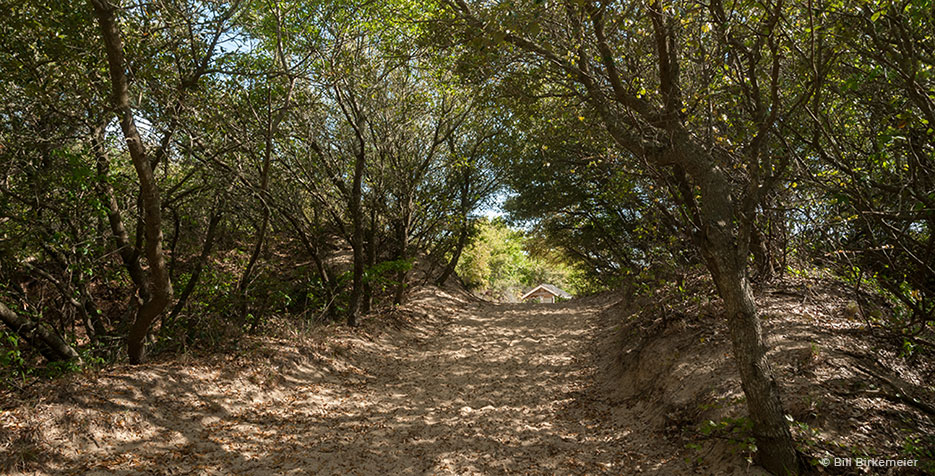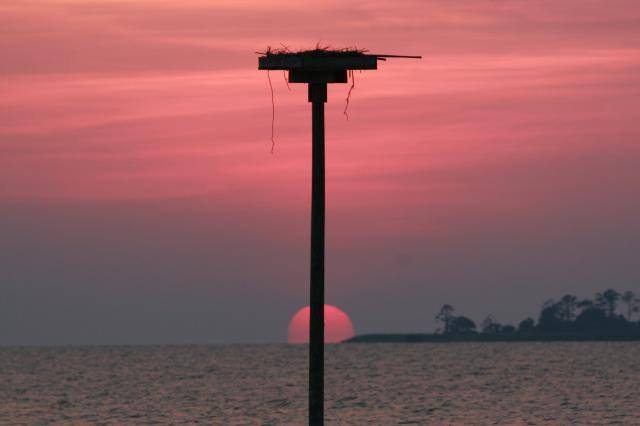Jockey’s Ridge is the tallest active sand dune system in the Eastern United States and the most striking of the remaining dunes on the Outer Banks. The winds blow from the northeast during the winter and from the southwest during the summer, so the sand is constantly blown back and forth, preventing it from blowing away entirely. At times, the dune can get as tall as 60 feet. Because the ridge is always changing, it is often referred to as “The Living Dune.”
The dunes are believed to have formed 3,000 to 4,000 years ago. The sand is mostly quartz rock. Geologists believe that strong water currents from hurricanes and storms washed sand from large offshore shoals onto the beach. Over many years, the wind picked up this sand and blew it inland. These evolved into a system of dunes that now stretches along the Outer Banks coastline. The amount of sand making up the 426 acres of Jockey’s Ridge is equal to about 6,000,000 dump truck loads!




